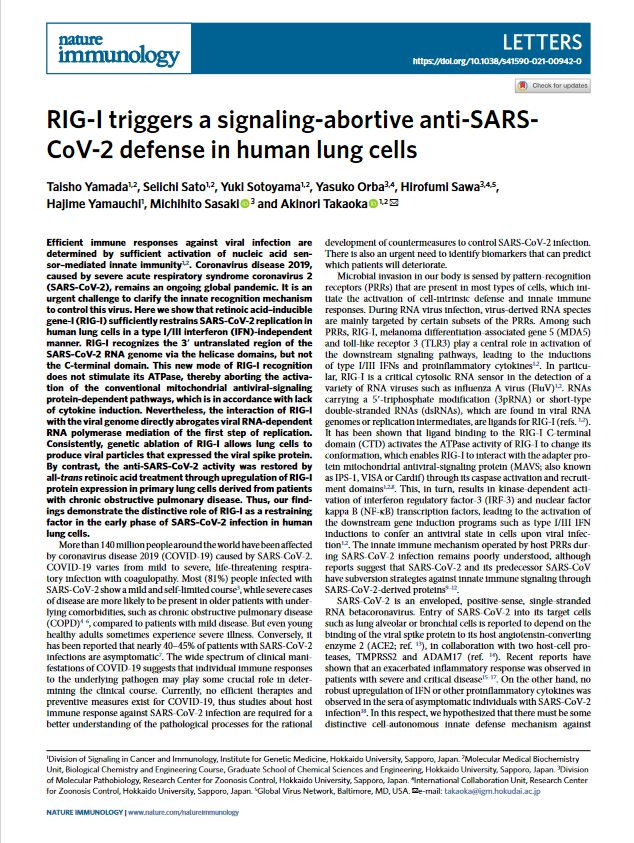25.06.2021
RIG-I triggers a signaling-abortive anti-SARS-CoV-2 defense in human lung cells
Nature Immunology, 2021
Abstract
Efficient immune responses against viral infection are determined by sufficient activation of nucleic acid sensor–mediated innate immunity1,2. Coronavirus disease 2019, caused by severe acute respiratory syndrome coronavirus 2 (SARS-CoV-2), remains an ongoing global pandemic. It is an urgent challenge to clarify the innate recognition mechanism to control this virus. Here we show that retinoic acid–inducible gene-I (RIG-I) sufficiently restrains SARS-CoV-2 replication in human lung cells in a type I/III interferon (IFN)-independent manner. RIG-I recognizes the 3′ untranslated region of the SARS-CoV-2 RNA genome via the helicase domains, but not the C-terminal domain. This new mode of RIG-I recognition does not stimulate its ATPase, thereby aborting the activation of the conventional mitochondrial antiviral-signaling protein-dependent pathways, which is in accordance with lack of cytokine induction. Nevertheless, the interaction of RIG-I with the viral genome directly abrogates viral RNA-dependent RNA polymerase mediation of the first step of replication. Consistently, genetic ablation of RIG-I allows lung cells to produce viral particles that expressed the viral spike protein. By contrast, the anti-SARS-CoV-2 activity was restored by all-trans retinoic acid treatment through upregulation of RIG-I protein expression in primary lung cells derived from patients with chronic obstructive pulmonary disease. Thus, our findings demonstrate the distinctive role of RIG-I as a restraining factor in the early phase of SARS-CoV-2 infection in human lung cells.
GeneTex ACE2 antibody [N1N2], N-term (GTX101395), TMPRSS2 antibody [N2C3] (GTX100743), SARS-CoV / SARS-CoV-2 (COVID-19) spike antibody [1A9] (GTX632604) are featured in this study.


